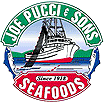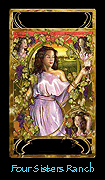First
Online Seafood Restaurant Guide Launches in U.S.
Fish2Fork Reveals Worst Offenders,
Lauds Best Stewarts of Oceans and
Marine Life, and Makes Surprising Discovery about Sushi Restaurants
Monday,
Jan. 18, 2010 – Fish2Fork, the first
online seafood restaurant guide of its kind to launch in the
United States, went live today with the ratings of 50 restaurants
in 14 states. The interactive guide aims to rate restaurants
not just on the usual criteria of how their seafood tastes,
but more importantly, on what impact its capture has on our
oceans and marine life.
Fish2fork’s editor Charles Clover revealed in his book
on which The End of the Line film was based, that as many as
80 percent of the world's fish stocks are fully or over-exploited
and some fish species, such as the bluefin tuna or the beluga
sturgeon, are now listed as critically endangered.
“Fish2Fork’s aim is not to persuade people to stop
eating fish,” said Clover. “Quite the contrary –
we want everyone to continue enjoying seafood, but the cavalier
attitude to our oceans and the seafood they contain has to change
if the appalling prospect of a world without many existing species
of fish is to be avoided. By making the right choices about
the fish they eat, diners have a powerful economic weapon they
can use in bringing about that all-important change.”
Fish2fork.com helps diners make informed decisions before they
visit a seafood restaurant and recognize those restaurants that
strive to serve the most sustainable fish and which serve mostly
fish to avoid.
The Fish2Fork survey found that sushi restaurants are the worst
offenders for serving up fish that are under threat in the wild.
Seven out of the worst 10 eateries assessed are sushi restaurants.
Bar Masa - junior sister to Masa, one of the most exclusive
and expensive restaurants in New York - was judged to be the
worst offender. Another restaurant in the city,
15 East, fared almost as badly. Both restaurants were given
5 Red Fish ratings. Other sushi restaurants featured in the
bottom 10 include: Yellowtail and Sushi Roku in Las Vegas; The
Hump and Mori Sushi in Los Angeles as well as Uchi in Austin,
Texas.
Ironically the restaurant that topped the survey also serves
sushi - demonstrating that sustainability and sushi are not
incompatible. Bamboo Sushi in Portland received a 4.5 Blue Fish
rating for putting sustainability at the heart of its menu by
ensuring all its fish and seafood come from stocks which are
not threatened. Another sushi restaurant, Tataki in San Francisco,
also scores highly, gaining three Blue Fish.
Three traditional seafood restaurants, including the two Michelin
Star Aqua in San Francisco, were also given a 5 Red Fish rating.
The other two were McCormick and Schmick's in Boston and the
Atlanta Fish Market.
Three restaurants put in an outstanding performance to receive
a 4 Blue Fish score: Blue Ridge in DC, Sea Rocket Bistro in
San Diego and Ray's Boathouse in Seattle. In all, 22 restaurants
of the 50 assessed - 44 percent - picked up a Red Fish rating
from 0.5 to 5.
A total of eight restaurants - 16 percent - got 3 Blue Fish
or higher and more than half - 28 (56 percent) - got a Blue
Fish rating of 0.5 to 4.5.
All the restaurants are judged primarily on the information
they provide about their seafood online. The restaurants that
display their sustainability credentials and give the most information
about their seafood score highest; provided they are not serving
fish from overfished stocks. Those that provide the least information
and serve fish from overfished stocks score poorly.
Visitors to the site will find information about seafood restaurants
across the U.S. and will be encouraged to ask questions about
the fish they are offered when they dine out. They can then
easily upload their own view of the restaurant's commitment
to sustainability onto the Web site and help give it a simple
rating score – blue fish for good and red fish for bad
– on a sliding scale.
The Web site uses the International Union for Conservation of
Nature (IUCN) Red List and the Monterey Bay Aquarium's Seafood
Watch's list of species to avoid to benchmark the menus of more
than 150 restaurants, a third of which have been rated so far.
Each restaurant was contacted and asked to complete a questionnaire
so that a rating could be given. The questions were designed
to assess a restaurant's sourcing policy, for instance, whether
it offered wild or farmed fish, whether it adhered to Seafood
Watch, or whether it offered species of fish which were either
endangered or under threat because of over-fishing. Where a
restaurant declined or was unable to complete the questionnaire
it was filled in by fish2fork.com staff using its online menu
and Web site as a source of information.
"Some restaurants still have not grasped that sustainability
has become part of the definition of good food. You don't want
to eat a wonderful meal and have nightmares about the species
you have pushed a little further towards extinction,”
said Clover. "This new guide shows the wonderful work some
chefs and proprietors are doing with fishermen to make sure
that they source fish of the highest quality caught in the most
selective ways. It also shows the awful dark side of gastronomy:
chefs who charge their customers the Earth for an ephemeral
meal that they prioritize above the survival of whole species
and ecosystems.”
Fish2fork.com, run by the same people who produced
the documentary film The End of the Line, about global over-fishing,
has reviewed and rated 50 restaurants initially to coincide
with 14 Fish n’ Flicks screenings of the film in restaurants
which started this week on the East and West coasts. The website
is relying on diners to help it become an authoritative reference
guide. For more information go to www.fish2om













